Agave plant has been known to Europeans since the discovery of the New World. Its homeland is the central part of the American continent: Mexico, the southern part of the USA, Latin America.
Indigenous New World residents noticed the healing properties of agave leaf juice. From it, they learned how to make medicines that help fight mainly skin diseases, as well as those that can eliminate some internal problems.
Europeans managed to tame the plant. Initially, it was bred for decorative purposes on the street, but over time, miniature varieties appeared, which everyone can grow on the windowsill.
Material Content:
Agave: what is this plant?
Agave is an inhabitant of drylands. It has juicy fleshy leaves, in which it accumulates large reserves of moisture. In most plant species, the stem is completely absent. And only in some it can be found in a shortened version.
Agave is a powerful outlet that spills above the ground. Wild species of plants can reach up to 2 meters in diameter. Agave leaves are long, elongated, of various green hues. Spikes or hairs grow along the edges along the plate. The leaf ends with a thin tip.
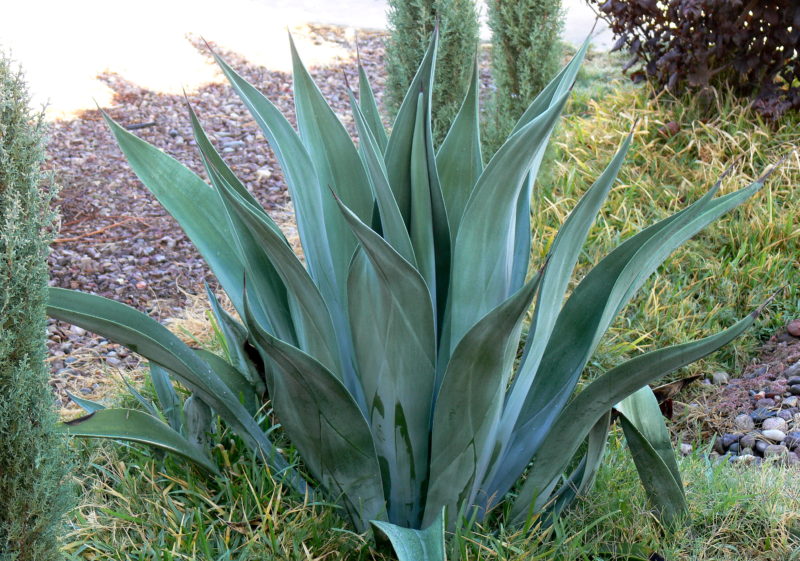
In nature, flowering species are mainly found. Of the decorative species, not every plant blooms.
After about 15-20 years of continuous growth, agave throws a long (up to 15 meters) flower stalk, on top of which tens of thousands of small flowers bloom. Subsequently, the adult plant dies, leaving behind a few basal shoots.
People have long learned to use agave. Entire plantations are sown for cultivation on an industrial scale. From the juice of the plant, alcoholic beverages are obtained: tequila, mezcal, pulke. From a rough shell of leaves weave ropes, ropes, make wrapping paper. Plant juice is used in folk medicine for the preparation of internal and external products.
Agave species
Agave is represented by a wide species diversity. Plants differ in size, density of the rosette, shape, color of leaves. Many wild species are present in the culture and have compact varieties for indoor cultivation.
Agave american - the most common type. Tall spreading plant, reaching up to 3 meters in length. Leaves are pale green with yellow bordering. Along the edges are quite rare, but long and sharp spikes. The socket is loose, laid out in layers. There are decorative varieties.

Blue agave - has economic value. Large plantations are grown in Mexico for the production of alcoholic beverages. The plant is distinguished by a dense rosette with thin long bare leaves of a bluish color. Cultivated blue agave is significantly different from the wild species.
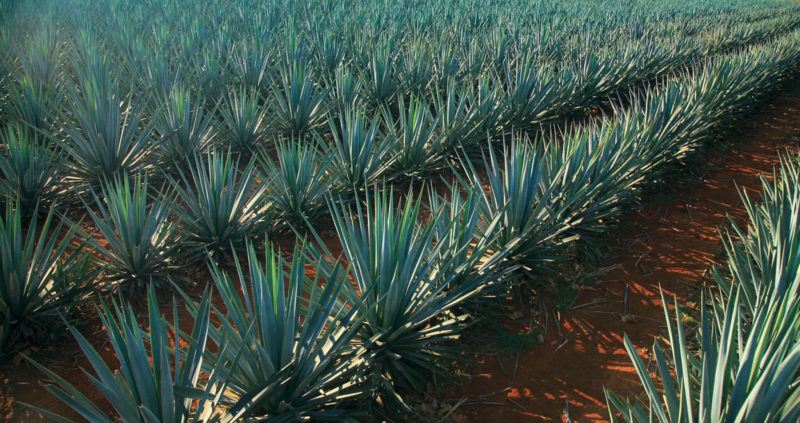
Agave compressed - often used for decorative purposes. Forms very dense spherical sockets. It is regularly updated, growing basal offspring. After the mother plant dies, several new ones are formed in its place. Agave leaves are compressed, thin, fleshy, needle-shaped.

Drawn agave got its name for external features. Its leaves are gathered around a short stalk, as if bent back. The sheet plate is wide, thin, bright green with a whitish tint at the base. Leaves are smooth, do not have spikes or villi.
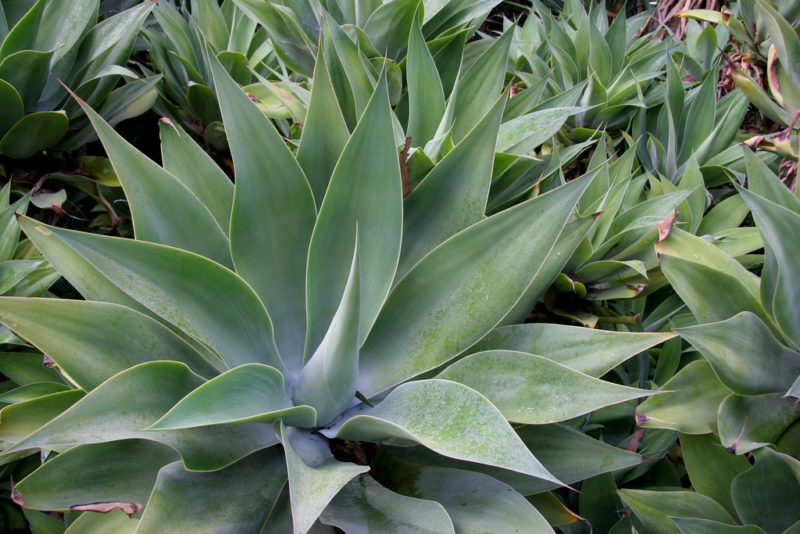
Agave nitiferous–– an ideal plant for the house. It has a modest size (up to 20 cm in length) and an attractive appearance. At the edge of each leaf, white villi are separated, they bend, forming curls. The leaves of this type of agave are thin, hard, matte with a spiky process at the apex.
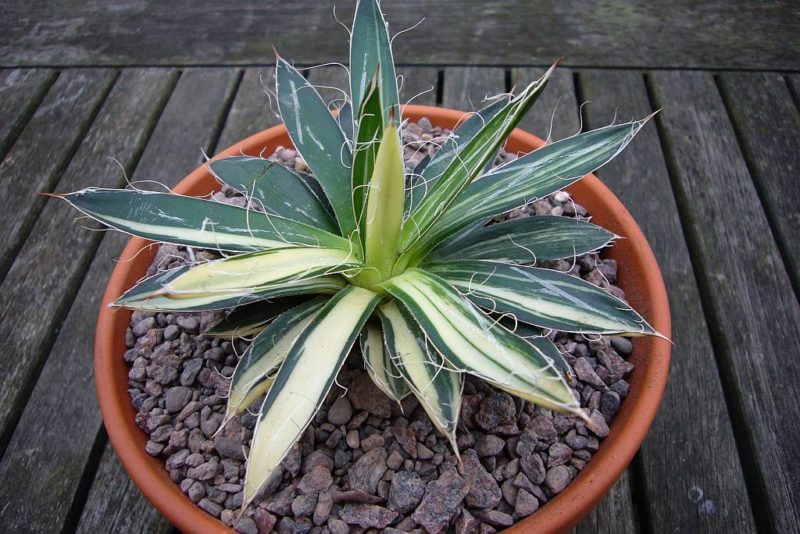
Queen Victoria Agave - one of the favorite plants of flower growers. It is great for growing on a windowsill. It does not require a lot of space. It grows only up to 15 cm. The leaves are fleshy, smooth, tightly planted, have only one spine at the apex. It is easy to get juice from this plant for preparing home remedies.
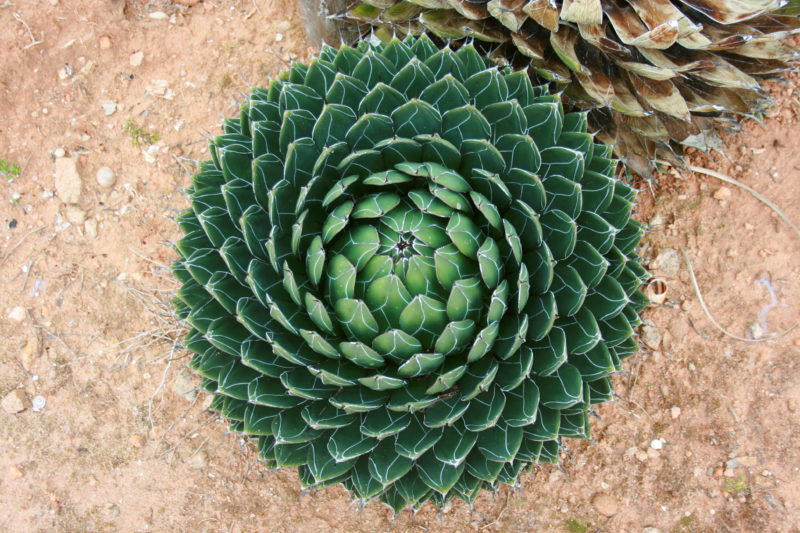
It is interesting:care for a fat woman at home
Tips for growing agave at home
To successfully grow a plant, you need to know where it comes from and what conditions are characteristic of its natural habitat. Agave feels good at home and does not require a special approach. However, like any indoor culture, it has features of growth.
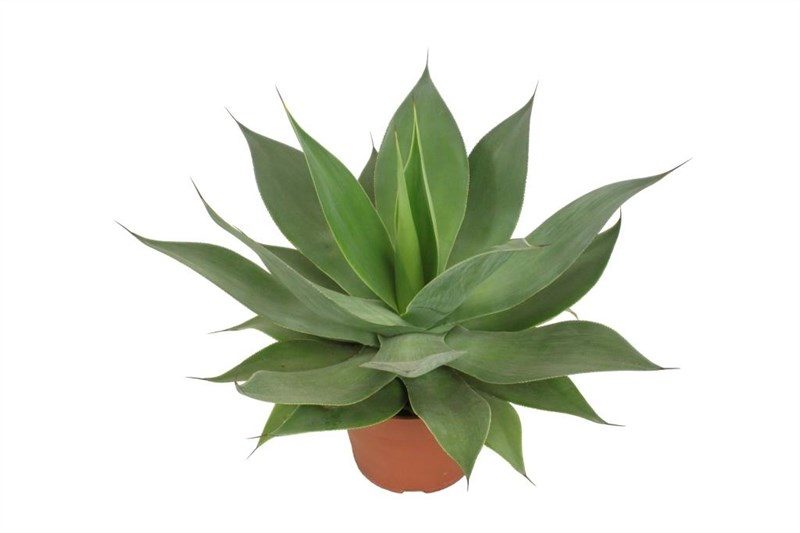
Lighting
Agave perfectly tolerates direct sunlight, and does not like shaded areas. With a lack of light, its leaves are extended, the outlet becomes less dense. The best placement is windows facing south.
In winter, during dormancy, agave can do without bright lighting, but if the plant has been in the shade for a long time, it cannot be exposed to the light. It must be accustomed to insolation gradually.
Temperature
The optimum temperature for growth is 23-28˚С, but this is summer. In winter, the plant has a dormant period, during which cool conditions are required (no higher than 16 ° C). Agave can be left all winter in well-lit frost-free rooms at 8-10 ° C.
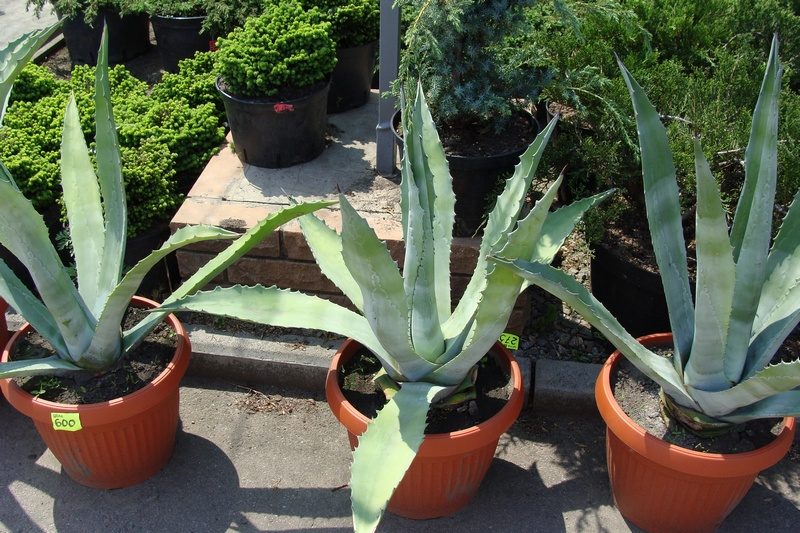
In summer, it is advisable to take the plant out into the air. During warm nights, agave can always be kept outside.If this is not possible, then you need to at least put a flower on the balcony or carefully ventilate the room.
Watering
The plant can tolerate drought for a long time. In summer, it should be watered no more than 1-2 times every two weeks, focusing on the condition of the soil. The top layer should be dry but not dry. In winter, agave can do without watering for a month or more.
When irrigation should be careful. Agave does not tolerate water accumulation in the depths of the outlet!
Humidity
Agave is not demanding on moisture. The level that develops in our apartments is quite enough for her. The plant does not need to be sprayed. But cleaning from dust should be done regularly, since dirt accumulates on wide sheet plates, preventing air and moisture exchange.
Top dressing
During the period of active growth, the plant needs additional nutrition. Feeding can be done with nitrogen-free fertilizers intended for succulents.
The ideal time of the year is summer. Nutrient mixtures are applied under the root up to two times a month.
The soil
In nature, agave is undemanding to the substrate. It can take root in depleted sandy soils. The main thing for her is high-quality drainage, therefore, when planting, they use a mixture of sand, turf and leafy soil in equal proportions, or purchase ready-made substrates for yucca, palm or succulents.
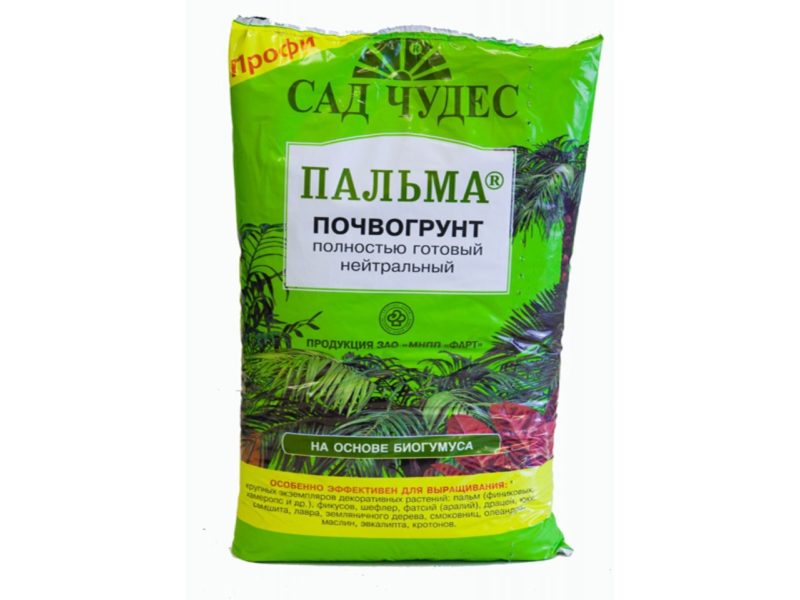
Experienced gardeners believe that agave loves a loose topsoil. Therefore, for drainage, brick crumb or pebbles are introduced into it.
It is interesting:Azalea at home
Rest period
This time at the agave comes every year from autumn to spring. During dormancy, the plant practically stops its growth. Ideally, agave should provide a temperature of 0 to 10 ° C. Illumination is desirable to remain at the same level.
At low temperatures, the plant can not be watered throughout the winter. But if it is not possible to provide it with ideal temperature conditions, occasionally it is necessary to irrigate the soil to avoid overdrying.
Transfer
A plant needs a transplant only as it grows. The young agave is actively developing the root system, so for it every year you have to pick up a new tub.
After 3-4 years, the transplant can be stopped and the pot changed as it becomes small. For agave, it is better to pick up shallow but wide tanks. An agave transplant, like any other type of plant, is made in the spring.
Breeding
There are two options for planting: seeds and offspring. The first is more troublesome. Agave, planted with seeds, grows very slowly.
For planting, a wet sandy substrate is selected. Seeds are immersed to a depth of not more than 1 cm, creating greenhouse conditions. You can use a jar for this. The temperature is maintained in the range from 20 to 25 ° C. The first true leaf appears 15-20 days after germination. Another plate grows approximately every 2-3 weeks. The rosette begins to form after the fourth real sheet.
The best way to grow a new plant is to separate the formed baby or offspring. They are carefully cut with a sharp blade and transplanted into a prepared pot. The cut-off location must be dried before planting. The first watering should be done only on the third day. The new plant does not need frequent irrigation. Before rooting, overmoistening of the soil should be avoided to avoid decay of the offspring.
Pests and diseases
The most common disease for agave is rot. This problem occurs in conditions of low temperatures and high humidity. The formation of rot can provoke the absence or poor quality of drainage.
The plant should not be waterlogged, as subsequently getting rid of rot will be extremely difficult. First of all, the disease is indicated by dullness and lethargy of the leaves. Both the root zone, the trunk, and parts of the outlet can rot.
As for pests, agave is practically not affected by them.Occasionally, scalefish, aphids, thrips or spider mites start on it. If a pest is found, it must be removed from the plant with a cotton swab dipped in alcohol or a soap solution.
Read also: fight against aphids folk remedies
If agave is badly infected, you will have to rinse and dry the entire plant. For processing, a solution of boric acid, alcohol or soapy water is used.
Growing agave at home is not a labor-intensive process.
You can build in your apartment a real flower garden of exotic plants that have healing properties.
The chemical composition of agave
Agave use is based on its chemical composition. In 100 grams of the aerial part of the plant is 1.5 grams of dry residue, which includes various forms of salts of calcium, magnesium, iron, phosphorus, zinc, sodium, potassium, manganese and selenium.
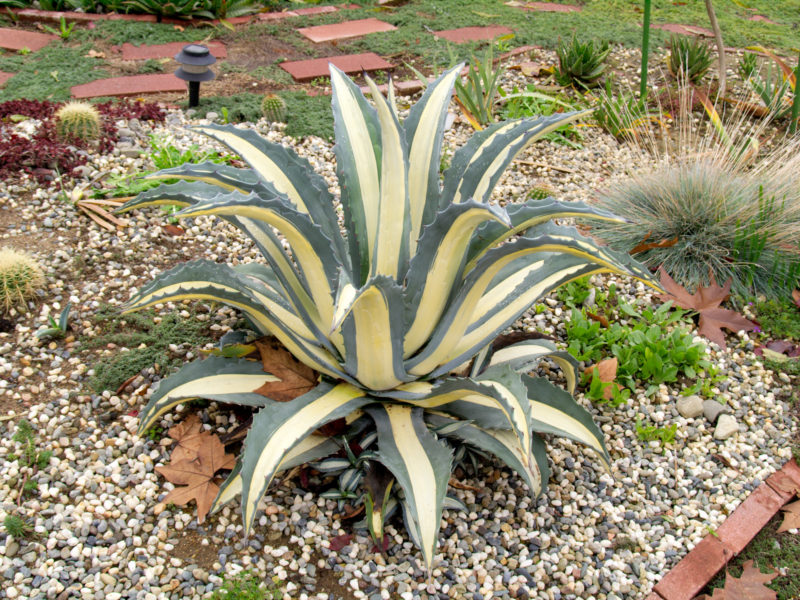
In addition to minerals, agave pulp contains many B vitamins, ascorbic acid, retinol, tocopherol, nicotinic acid, vitamin K.
The composition of the leaves contains amino acids, sugars, dietary fiber, complex carbohydrates and about 0.5 grams of protein.
Why agave is good for the body
Agave preparations are prepared for both internal and external use. These products are well suited for treating abrasions and cuts, absorb hematomas, and reduce the severity of inflammation.
Agave juice is able to relieve pain, fights digestive tract diseases, normalizes metabolism, helps to recover faster and restore strength after a seasonal cold.
The healing properties of agave
Agave properties fit into the following descriptions:
- anti-inflammatory;
- painkiller;
- hemostatic;
- disinfecting;
- expectorant;
- diuretic;
- laxative;
- normalizing blood circulation and metabolism.
Home plants have the same healing qualities as wild ones. Therefore, drugs can also be prepared from them.
Fresh Agave Treatment
The age of the plant from which they are going to prepare a medicinal product should exceed 3 years. The concentration of substances in the juice of a younger agave is not high enough to provide a therapeutic effect.
Infusion for the treatment of the stomach, liver
To prepare the infusion, cut one small leaf of a plant 8-10 cm in size. Thoroughly rinse under running water, chop, cut into thin pieces. Prepared slurry must be poured with a glass of cold boiled or filtered water, and put in a cool dark place for 6 hours.
This infusion should be taken 1 tablespoon before each meal for breakfast, lunch and dinner. After 10 procedures, there will be a clear improvement.
Agave for bronchitis and cough
A remedy for lung diseases is prepared from fresh plant juice. It must be taken in an amount of 20 grams. Add to it the same amount of melted pork fat, about half a pack of butter and half a glass of natural honey. The prepared mixture is stored in the refrigerator. Drink twice a day, adding 1 tablespoon to a warm drink.
Agave Skin Treatment
Agave juice can cause a chemical burn. Any product prepared from it should be carefully tried, applying to a small area of the skin from the inside of the elbow. If after 2 hours of irritation and redness has not appeared - you can start the procedure.
Various rashes, purulent inflammations, boils are treated with the help of applications from leaves crushed into gruel. Dressings change as they dry. Thanks to the disinfectant and anti-inflammatory effect of agave, any sores are quickly cleared of infiltrate.
For more sensitive skin, you can prepare the product from equal parts of agave juice and olive oil. It is also applied to problem areas 2-3 times a day.
An ointment from agave juice and honey will help to quickly relieve inflammation and pain after a burn. The ingredients are taken in a ratio of 1:10.
How to make agave medicine at home
If the recipe requires juice or pulp of a plant, it can be obtained as follows:
- gently cut off the sheet at the very core;
- rinse off dust under running water;
- with a sharp blade, cut lengthwise into two broad halves;
- scrape the dull side of the knife with the flesh;
- squeeze the juice through cheesecloth.
If the whole leaves are required for the medicine, they are simply chopped in random order. To prepare agave powder, the leaf is cut in half and dried.
Contraindications
Agave-based medicines are potent substances that can cause a chemical burn or skin irritation. Such treatment should be avoided by people prone to allergic reactions.
Preparations for oral administration are contraindicated during pregnancy, as they can adversely affect its course.

People suffering from diseases of the gallbladder should not use agents from agave, as they can provoke a strong flow of bile.
Despite the fact that the ancestors of the flower come from Central America, it can be successfully grown even in our climate-unfavorable strip. An agave houseplant whose medicinal properties are no different from those of a wild-growing species can always be kept at hand. A pot with medicinal planting will give you the opportunity at any time to prepare a natural medicine, without leaving your home.












